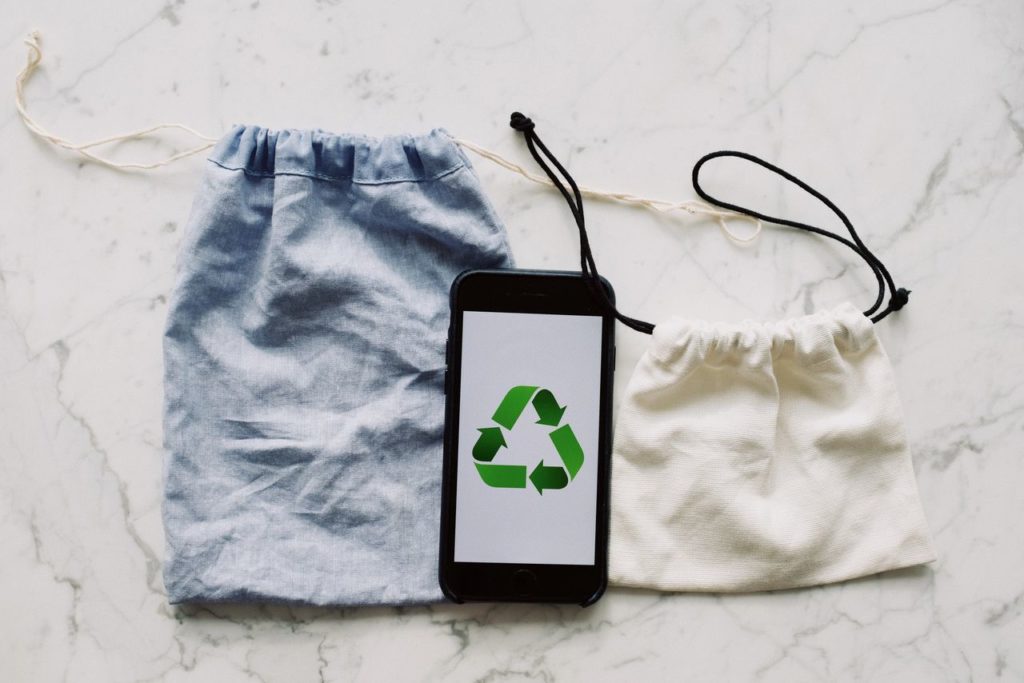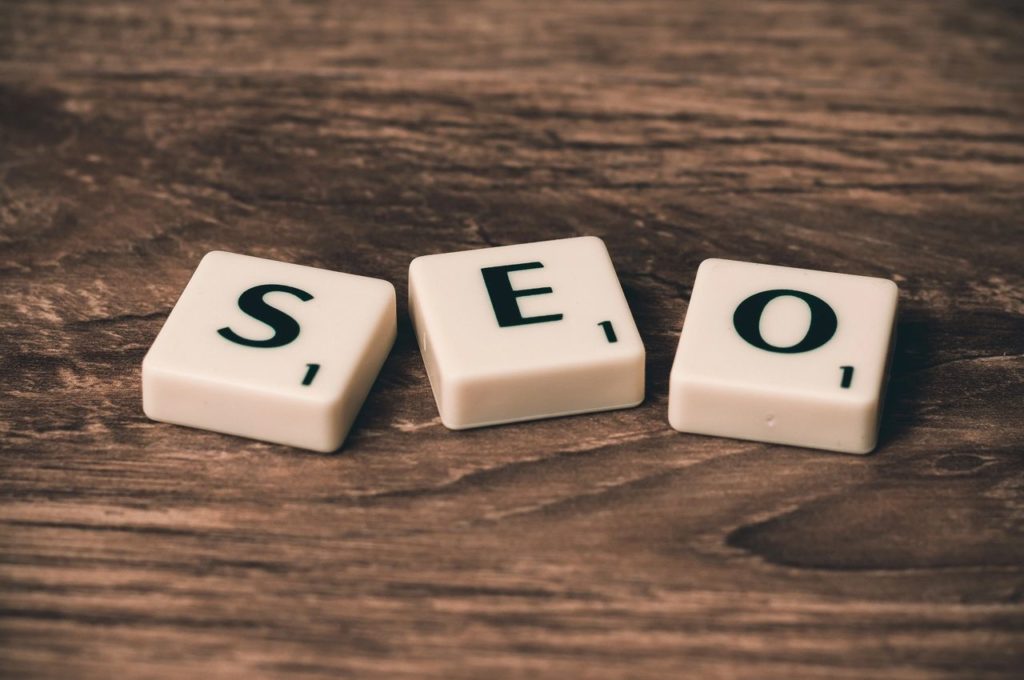If you own a small business, there’s no shortage of reasons to go green. Most importantly, we all need to play our part to reverse the climate crisis. But sustainable retail benefits more than just the planet: it can boost brand loyalty, save you money, and help your company thrive in a changing world.
Going green is good for business, but it can be hard to focus on your carbon footprint when you’re tending to a laundry list of daily demands. And when you’re a small business, it’s important you get the most out of every penny you put into the effort.
This guide to sustainable retail unpacks the process step-by-step, so you can develop a plan that suits your budget and your busy schedule.
1. Why Go Green? The Importance of Sustainability in Retail
Boost Brand Value and Loyalty
Today’s consumers want to align their spending with their values. And sustainability tops the list. Millennials are twice as likely than older generations to change their habits to reduce their environmental footprint, and Gen Z even more-so.
Why that matters: Millennials now have around $2.45 trillion in spending power, and they care about where their money goes – over 70% say they’re willing to pay more for sustainable goods.
Benefit Your Bottom Line
Sustainable retail practices can slash your carbon footprint and your monthly bills. Studies show a strong sustainability strategy can affect operating profits by up to 60%. Installing solar panels, for instance, could cut your energy bill in half. And perks like telecommuting boost employee productivity and cut real estate costs.
Fit Your Business to the Future
The future is green, and becoming more sustainable today will help your business in the long run. Millennials will soon comprise the majority of the US workforce, and 40% say they’ve taken a job offer because the company was environmentally-responsible.
Not only does going green attract talent, it gives you an opportunity to lead in a changing world. As you develop innovative ways to address your unique challenges, you can help solve environmental issues in your industry as a whole.
2. Building Your Sustainability Plan
Step One: Establish a Green Team or Sustainability Council
Bring diverse skill-sets and perspectives to the table by establishing a “green team” or sustainability council. Call in company leaders, eco-conscious employees, and talent from all areas of your business. Whether you’re a mom-and-pop establishment or a larger independent store, everyone on your team has something valuable to contribute.
Sustainability Council Kickoff Agenda
- Allow each team member to introduce themselves, their role in the company, and what brought them to the table.
- Communicate the mission – to be more sustainable! – and explain why your business wants to develop a plan to prioritize the planet.
- Determine the structure of the group. Who is in charge? Who reports to whom? How will group decisions be made? Every team is different, so choose a structure that feels authentic to yours.
- Discuss how your team can best conduct a sustainability audit, and for which items each member is responsible.
- Schedule a follow-up meeting and set clear action items for each team member moving forward.
Step Two: Do a Sustainability Audit
A sustainability audit reveals what’s working with your business – and what can be improved. Don’t be turned off if you don’t have the time or resources to take a microscope to your entire operation. Simple, straightforward audits can generate effective, actionable insight. Dedicate team members to look into the following:
Sustainability Audit Checklist
- Waste: Where does your company waste resources, products, or energy? Take a closer look at your production processes, day-to-day operations, and industry by-products to identify what’s slipping through the cracks.
- Resources: Where can your company use resources more wisely? Are there areas where you can cut back, or choose sustainable alternatives? Ex: Switching to a digital receipt app to reduce paper usage.
- Carbon Footprint: Just like people, businesses have carbon footprints. Tools like the SEM Carbon Calculator translate your business data into greenhouse gas emissions, so you can better understand yours.
- Pollutants: Identify where your business adds pollutants to the environment. This can be anything from bathroom cleaners, to delivery fleet emissions, to industrial waste.
- Product Development: Does your business consider sustainability in the production phase? How can you design and produce your product to support sustainability throughout its entire lifecycle?
- Structure: Does your business have the infrastructure and governance to maintain a comprehensive sustainability program? If not, what changes need to be made?
- Social Impact: Climate change intersects with countless social issues. How is your business catalyzing change beyond its carbon footprint?
Step Three: Determine Your Sustainability Priorities
Once your team has completed its sustainability audit, set a meeting to discuss your findings and determine key priorities. Can you make major gains on energy-efficiency, or does production leave much to be desired? Look at the data from your customers’ perspective to determine what matters most to your clientele and the planet.
Step Four: Determine How You’ll Track
Before you get to work, decide which metrics you’ll use to track and measure your efforts. For instance, you may use your existing inventory to track food waste, or create a spreadsheet to measure the cost-savings of energy-efficiency improvements. You’ll build upon this system as you progress, so plan to optimize the process as you go.
Step Five: Implement, Revisit, and Revise
Once you set your plan into action, the real work begins. Sustainability isn’t a milestone to achieve, it’s a mindset you’ll revisit again and again. Set a standing meeting to review your progress, revisit priorities, and discuss the challenges your team is facing. And don’t give up! Even small changes can have a big impact long-term.
3. Sustainable Practices
There’s no blueprint for sustainability – because no two companies are the same! As you move deeper into your unique plan, you’ll discover new and exciting ways to improve. But getting started can be overwhelming, so get the ball rolling with these best practices.
Best Practice #1: Reduce Your Day-to-Day Impact
From what you sell in-store to how you keep the lights on, every part of your daily operations influences your carbon footprint. Optimize these day-to-day choices to reduce the carbon cost of doing business.
Use Energy Wisely
- EnergyStar-certified lighting, appliances, plumbing, and HVAC systems are cost-competitive with conventional alternatives and can save you money in the long run.
- Install solar panels or opt into an EPA green power partnership to save money and green your electrical grid.
- Prevent escaped energy by sealing air leaks and insulating windows, water heaters, and HVAC units.
- Appliances that use power in “off” mode can account for up to 20% of your energy bill. Use power strips and set auto power downs to eliminate phantom leaks.
Embrace Digital Alternatives
- Nearly 90% of consumers want retailers to offer e-receipts, but most businesses don’t. Reduce waste and stand out from the competition with digital receipt apps . Learn more why businesses should switch to e-receipts. Push for positive change throughout your industry by supporting sustainable retail campaigns like Reduce Paper Slips.
- Save paper by digitizing your inventory and bookkeeping processes. Try Quickbooks for comprehensive services, Upserve for ingredient and waste tracking, and Zoho for project management integration.
- QR code menus are easier to create and update than you might think. Try one of these options for contact- and waste-free ordering.
Cut Waste
- Nearly 90% of plastic is single-use, but it persists in the environment for generations. Join the Last Plastic Straw movement and work to eliminate plastic straws, bags, dishware, and other single-use items from your business.
- Find other uses for food scraps and compost what you can’t repurpose. Recycle and reuse containers to give those goods a second life.
- Offer discounts to customers who bring their own mugs or bags to incentivize reusables. Send updates and offers directly to their phones using apps like e.pop.
Use Sustainable Products
- Swap in recycled toilet paper, paper towels, printer paper, and napkins – and use reusables where it makes sense.
- Introduce more plant-based, organic options to your menu. On average, plant proteins generate ten times less carbon emissions than beef products.
- Switch to non-toxic cleaning supplies, handsoap, and dish soap for pro-people, pro-planet cleansing.
- Secondhand items have a unique charm and cut the carbon cost of buying new. Shop Habitat’s ReStore, local thrift stores, or online buy/sell groups for gently-used furniture, dishware, and decor that matches your sustainable values.
Best Practice #2: Optimize Your Supply Chain
Consumers drive 60% of all global emissions, and much of that is gathered along the supply chain. Review your production, packaging, and delivery processes to make sustainability gains before your products meet the consumer.
Circular Production
Circular production “closes the loop” rather than rushing your product from the cradle to the grave. Review the materials you use, the waste you generate, and what happens to your product at end-of-life to identify where you can get creative.
Take Girlfriend Collective, an activewear brand that knits its fabrics from recycled bottles. To boost sustainability throughout the entire product life-cycle, the company offers microfiber laundry filters and a store-credit buyback program for retired clothing.
Sustainable Packaging
64% of customers say they’d be more likely to purchase from a business that offers compostable packaging. Review your packaging to identify where you can cut waste or swap for sustainable materials. Noissue creates sustainable, custom packaging for businesses of all sizes and budgets.
Net-Zero Shipping
Consider innovative ways to address your shipping carbon footprint. For instance, 98% of Etsy’s carbon emissions stem from items shipped from sellers to buyers. In response, the online retailer became the first global ecommerce company to offset 100% of carbon emissions linked to its services.
Best Practice #3: Reduce Your Employee Footprint
Cut Transportation Pollution
Offer remote work or flex schedules to cut employee commutes, slash operating costs, and boost productivity and retention. Foster a culture of telecommuting when possible, as opposed to flying to workshops, seminars, and meetings.
Reduce Office Waste
- Eliminate single use products in break rooms and common spaces. Provide reusable cutlery, dishware, glasses, and other items.
- Install a water filter system to save dozens of single-use plastic bottles every day.
- Provide Fair Trade coffee, tea, and snacks to support proper land stewardship, waste management, and ethical business practices.
- Set up a compost bin to capture employee’s food scraps. (Bonus points if you use it in your brand new community garden!)
Promote Conscious Energy Use
Post signs in break spaces to conserve water and shut off monitors to keep sustainability top of mind; install power strips to make it easier to power down entire work stations; provide laptops over desktops to conserve energy and make working from home easier.
Best Practice #4: Green Your Business Partnerships
We’re stronger together, and that goes for business partnerships too. Whether you’re selling sustainable products, teaming up with zero-waste organizations, or using eco-friendly digital platforms – there’s no shortage of ways to collaborate for the good of the planet.
Apps are powerful tools to reach eco-conscious consumers. Consider Too Good To Go, a European app that connects restaurants and grocery stores with customers hungry for their daily food waste. Or sign up for e.pop to provide digital proof of purchase – and get a tree planted in your name!
Best Practice #5: Leverage Donations and Offsets
It’s hard to completely eliminate your footprint in a fossil-fueled world. Support groups working to create a world where sustainability comes easy by offsetting your emissions and donating to environmental causes.
There’s no shortage of ways to track and offset your company’s carbon footprint. Berkley’s CoolClimate calculator provides basic and advanced estimates. TerraPass offers calculations and offsets for businesses, and events. And Joro allows users to link personal and company cards to automatically track (and offset) their monthly footprint.
Take action to make it easy for customers to support sustainability. Groups like 1% for the Planet allow companies to commit a portion of their annual sales to value-aligned nonprofit partners. Or, encourage consumers to download e.pop to be the first to use its upcoming in-app donation feature.
4. Creating an Eco-Conscious Work Culture
Define and Communicate a Shared Vision
A strong vision statement helps your team and customers understand your business principles, and how they can support your efforts. Work with your green team to develop one that rings true for you.
Tips for Writing Your Vision Statement
- Clear: Skip the fluffy language and industry jargon and get to the point. What are you all about? Be specific!
- Concise: Your team has enough to remember, create a short vision statement they can easily keep it front of mind. Get your point across in three sentences or less.
- Actionable: Create a well-defined statement that employees can use to make value-aligned decisions day-to-day.
Example: e.pop’s vision statement clearly communicates the brand’s vision of the future, and how its digital receipts help pave the way.
“Changing the way people and companies think about receipt solutions is what drives e.pop. Our mission is to build a community and connect forward-thinking companies and consumers to become carbon negative and ditch the paper receipt altogether. We are starting a movement to drive environmental change and innovation all while keeping your life organized and trees where they belong.”
Support Sustainability Competence
Help your team get invested in your shared vision. Provide relevant learning opportunities, host employee-led lunch-and-learns, or establish a small budget for conferences, seminars, and sustainability training.
Co-Create with Employees
Boost employee buy-in by co-creating with your team. Maintain and build your sustainability leadership council, slot time for open discussion on sustainability topics, and create a system for employees to provide feedback and implement their big ideas.
Incentivize Participation
Help your team adopt sustainable habits through friendly competition and participation perks. Could you offer incentives for low-carbon commutes? Or spark department comradery with an office energy-use challenge. Create rewards based around what your team enjoys – showing your appreciation doesn’t have to break the bank.
Share and Celebrate Your Success
Many businesses put in a huge effort during the ideation phase and lose momentum in the busyness of daily operations. Keep sustainability on the agenda at your regular meetings, in company updates, and celebrate staff and departments who make green gains.
5. Marketing Your Sustainable Business
You’re building a sustainable retail business – of course, you want to share the news! Follow these steps to integrate your eco-conscious persona into your current marketing strategy.
Step One: Revisit Your Mission Statement
Your mission statement is at the core of what you do – and sustainability should be too! If your company’s mission statement omits your pro-planet mentality, it might be time for a refresh. Revisit yours to incorporate your sustainable retail vision, and develop messaging aligned with your values.
Step Two: Identify Primary Selling Points
You’re doing great things, but the market is crowded. To cut through the noise, you need to understand what your customers are listening for:
- Track and Target: Apps like e.pop make it easy to track consumer behavior automatically, so you can provide special offers and marketing tailored to your customers’ preferences.
- Define Benefits and Trade-Offs: Going green is good for the planet, but how exactly is your business shaping a brighter future? Identify and understand three to five key benefits, and brainstorm how you can put a positive spin on any points of protest (IE: price, convenience).
- Don’t Greenwash: Today’s consumers are savvy, and making misleading claims about sustainability is an easy way to lose support. Avoid greenwashing by using clear, concise, and factual language to describe your innovations and progress. Be transparent, and make sure your messaging holds up to market scrutiny.
Step Three: Audit Your Current Strategy
Review your current marketing strategy to identify what’s working, what could be improved, and how you can add sustainability to the mix. Brainstorm ways to organically integrate your sustainable marketing plan into your messaging, and build campaigns around your new core value.
Your content strategy supports your mission statement. As you modify your approach, ask your team repeatedly – “is this true to our brand and mission?”
Step Four: Leverage Sustainable Marketing Best Practices
Make Customers the Hero
It’s easy to talk about the benefits of your business. But it’s more effective to focus on how your customer “wins” by supporting that business. Whether they reduce their footprint, support fair labor, or plant trees with every purchase – they’re the hero of your story, their story, and our shared future.
Market the Sustainability Vision
Let’s face it, our small choices have a negligible impact on the climate crisis. But together, we can reshape the future. Look past single scenarios and towards the bigger picture with your messaging.
A great example from the retail industry is Levi’s “Buy Better, Wear Longer” campaign shows customers how they’re working towards a world where, together, we reduce our collective impact. Give your customers a taste of the world you envision – and let them live in it for a while.
Hang Out Where Your People Are
Most people believe in climate change, but that doesn’t make everyone your ideal customer. Apps like e.pop compile anonymous data about how your customers shop beyond your storefront. This can help you decide where to direct your marketing efforts. Zero-waste Facebook groups? Farmer’s markets? Local outdoor organizations? Hang out where your customers are – and meet their friends.
Personalize the Customer Experience
These days, it’s not enough just to go green. Customers expect the companies they support to be conscious – beyond that, they want a brand that’s a perfect fit. Generic messaging misses the opportunity to tailor your message to your unique customer. e.pop allows you to access anonymous customer metrics, develop campaigns around that data, and provide offers directly through the app.
Take Advantage of SEO
Leverage SEO to drive organic traffic to your website and become a sustainability thought leader in your field. (It’s not as scary as you think!) Tools like Google Search Console and Answer the Public can help you understand what your target customer wants to know. Create useful content around these subjects to grow a legion of dedicated superfans.
Create Fresh Digital Content
Create unique content solo, or with other green innovators, to increase your digital reach. Collaborate with your preferred partners on educational articles, host live Q&As with green influencers, or swap social media feeds with another sustainable brand to introduce yourselves to a new audience. The sky’s the limit with creative content: try starting an Instagram Reels challenge, create a quiz or questionnaire, or develop a webinar that matters to your network.
Piggyback on Relevant Trends
The internet is in constant motion, and a new viral trend or niche holiday rears its head every day. Dedicate a team member to creating content around environmental trends in retail as they arise. Keep a calendar of sustainability holidays and events to create relevant marketing materials throughout the year.
Ready to start building a sustainable retail brand? Ditch paper receipts for digital proof of purchase with e.pop.
Join the Fight Against Climate Change
and much more. Get retail tips, trends and news! Be part of the e.pop merchant community!

Marley Flueger
Freelance sustainability writer working to demystify the climate crisis, connect people with tools for lighter living, and create pathways for us all to push the needle towards a fossil fuel-free and equitable future.







thanks